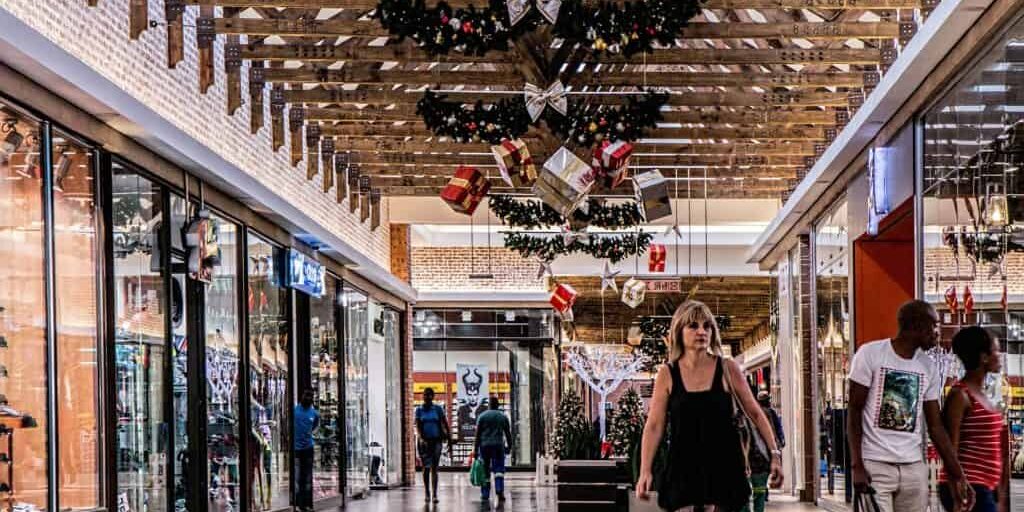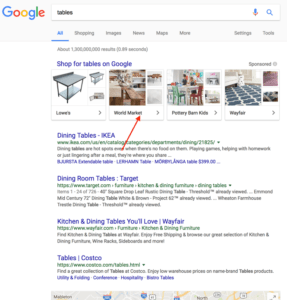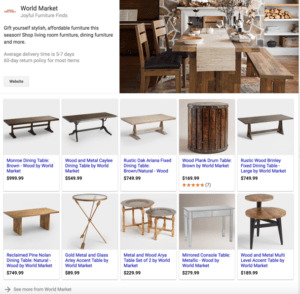Four New Paid Search Features for the Holidays

The holidays are coming up on us fast, and if you’re a retailer – online, in store, or both – you’re likely gearing up for your busiest season of the year. As you refine and deploy your holiday paid search strategies, keep the following in mind:
The Death – and Rebirth – of Retail?
Though much is made of the death of holiday retail – especially in store – the facts paint a slightly more positive picture. According to Forbes, consumer confidence experienced an unexpected rebound in October after three months of decline. Consumers are 25% more confident in the economy than last year. Economists predict that spending intent will remain strong through the remainder of the year, a hopeful sign for retailers continuing to struggle with the evolution in shopping from in-store to online (and vice versa).
The National Retail Federation notes that, in a recent survey, consumers said that they will spend an average of about $967 this year, up more than 3% from what consumers said they would spend around the same time last year. The NRF expects retail sales in November and December to increase between 3.6 and 4% from 2016 – expecting up to $682 billion in spending (compared to a little more than $655 billion last year).
Online or In Store?
Though online shopping is assumed to be the modern mode of choice, there is significant evidence that consumers also prefer in-store experiences – especially when in combination with digital engagement. In fact, according to Deloitte Insights:
- People are shopping online, but also prefer retailers also have a physical location (1/3 of respondents in a survey noted the importance of having access to “both a store I can visit and an online site”).
- Retailers have a 75% chance of turning a desktop or laptop user into a purchaser during the 2017 holidays. They also have an almost 60% chance of turning someone using a smartphone into a customer.
- 83% of respondents in Deloitte’s survey reported that they were expecting use their computers for holiday shopping.
Indeed, as Deloitte Insights points out: “Retailers that understand what makes for a satisfying shopping experience—and that can deliver that experience across channels to an increasingly fragmented consumer base—will be poised to set themselves apart from the competition.”
You Know What We’re About to Say – Go Omni-Channel
This information leads us to the incredible importance of omni-channel marketing – both in your regular marketing and advertising efforts, and especially during the holidays. With Amazon, a one stop shop putting up the biggest competition to online and brick and mortar stores, this more potentially lucrative retail environment is still a difficult one for many businesses to navigate.
An omni-channel approach is, as Harvard Business Review notes, “a panacea for a difficult environment.” Omni-channel strategies allow for positive brick-and-mortar shopping experiences that fully utilize digital channels as well. Harvard Business Review also reports on a study it did with a major retailer of 46,000 shoppers, finding that, of the participants, 7% were online only, 20% were store-only, and a staggering 73% used multiple channels along the shopping journey. The study also found that the more channels a customer uses, the more valuable he or she is: “After controlling for shopping experience, they spent an average of 4% more on every shopping occasion in the store and 10% more online than single-channel customers. Even more compelling, with every additional channel they used, the shoppers spent more money in the store.”
And Now Down to the Nitty Gritty: New Paid Search Features to Advance Your Omni-Channel Strategy
A Google study found that “local and omni-channel [paid search] strategies drive an 80% higher rate of incremental store visits.” Such strategies include increasing your bids around your business locations and including in-stock merchandise at nearby stores. Google also found that mobile ads drive more than double the number of incremental store ads (compared to desktop and tablet ads). And, according to another study, “people who click on a Google ad before visiting a store are over 25% more likely to buy something while they’re there and spend over 10% more, on average.”
Paid search is a key channel in any omni-channel strategy, and new features help strengthen your strategy as we head into holiday shopping season:
Showcase Shopping Ads allow your brand to use a selection of lifestyle images/products to help drive purchase intention. As shoppers explore new products, this new feature offers a chance to highlight your product in a number of new ways that could reflect their lifestyles, and attract shoppers of a variety of tastes. Google found that users search for merchants’ brand terms twice as often, on average, after expanding a showcase shopping ad from the brand. Brands have seen increased brand-related searches and conversions because of showcase shopping ads as compared to standard ones. Going into the holiday season, this kind of edge can make a huge difference. It is clear that a showcase shopping ad can help a brick and mortar store draw more brand-seeking foot traffic.

A Showcase Shopping ad.

An expanded Showcase Shopping ad.
Geared toward local, last minute shoppers, Google is offering an inventory list on the Google Assistant. Shoppers near your store who ask Google Home or their phones about a specific product (that you carry) will be alerted to your store. They will also know they can come to your store and you will have the product they are looking for, rather than showing up and being disappointed by sold out inventory. This also provides a seamless online to in-person shopping experience. If you already have a local product inventory feed, your products will likely appear in the Assistant’s results.
Google has announced that a new Display advertising option will soon be available that allows you to highlight products and promotions you have in store, which even further encourages online to in-store foot traffic. Google compares the comprehensive nature of this feature to the content of circulars and catalogs.
Enhanced store visits measurements were also recently announced. These analytics will help display advertisers truly understand the impact of their ads on in-store shopping. Impression-based store visit data is coming in the next few months, as well as new vs returning customer reports. Other valuable store visit reports that are now available include reports that reveal how long users wait before coming into the store after clicking on your ad as well as demographic reports.
In Conclusion
Innovation in analytics and ad capabilities are both poised to make the 2017 holiday season a successful one for your business. Stay tuned for more articles on topics like these by coming back to visit our digital marketing blog again soon.
If you are interested in growing your presence in paid search and other digital channels during this holiday season, learn more about Lead Horse Marketing’s money-back guarantee today.
Sources:
https://nrf.com/resources/consumer-research-and-data/holiday-spending/holiday-headquarters
https://hbr.org/2017/01/a-study-of-46000-shoppers-shows-that-omnichannel-retailing-works
https://adwords.googleblog.com/2017/10/unwrapping-new-innovations-for-holidays.html
Recent Posts
You’ve heard it here, you’ve heard it there, you’ve heard it from any SEO agency:…
Every month, our SEO team looks back on the previous months to determine wins, losses,…















